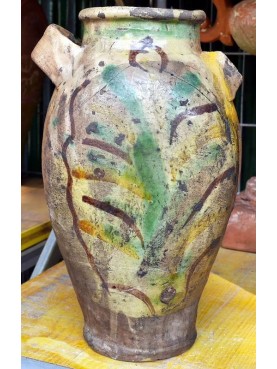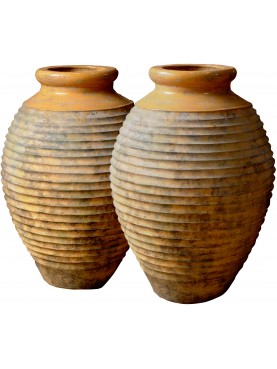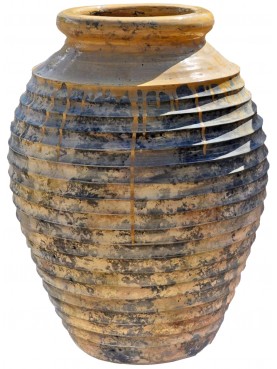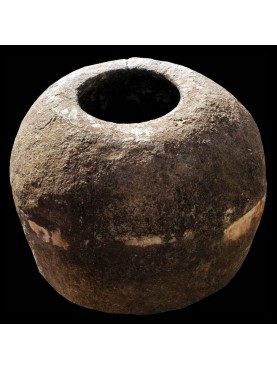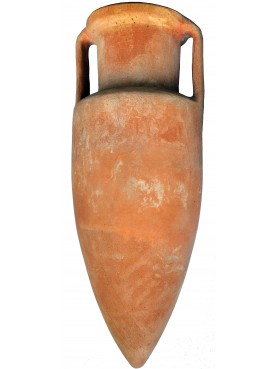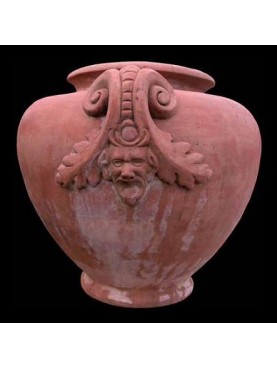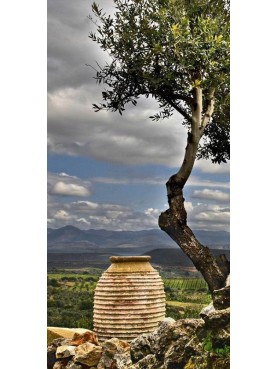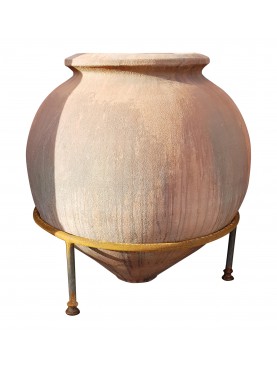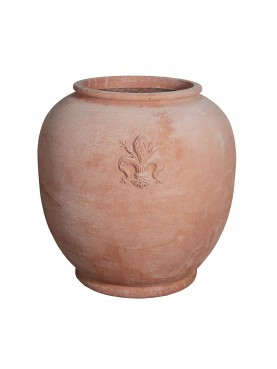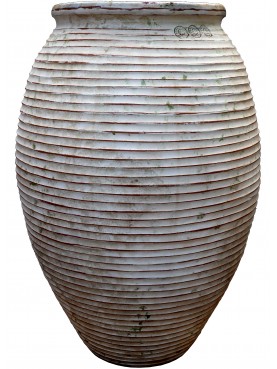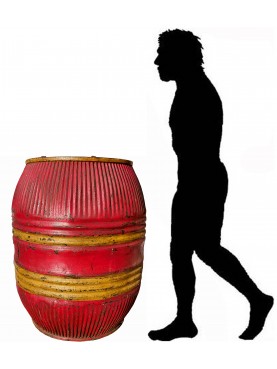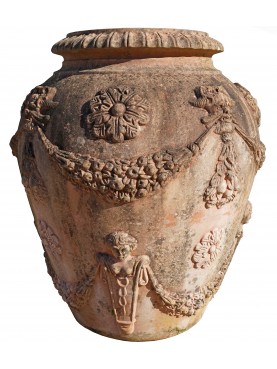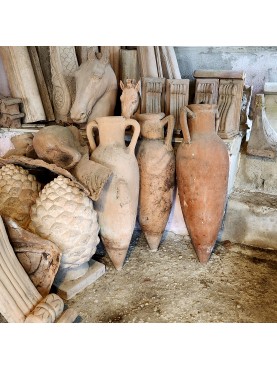Terracotta oil amphora from southern Italy produced between the 19th and 20th centuries
Terracotta oil amphora from southern Italy produced between the 19th and 20th centuries
15223
Original
This is a classic olearia (olive oil) amphora from Southern Italy produced until the mid-1900s.
They were commonly produced in Campania, Basilicata, Puglia and Calabria. The shape of these artefacts made on the lathe has the particularity of being very similar to that of the Roman amphorae found in southern Italy. In practice this form has been made in the Mediterranean area for over 1000 years.
This reflection has no scientific basis, it is just our reflection.

1 Available
Warning: Last item in stock!
Data sheet
| Height | 34.65 in | 88 cm |
| Width | 29.53 in | 75 cm |
| Weight | 330.69 lbs | 150 Kg |
| External mouth diameter | 7.48 in | 19 cm |
| internal diameter of the mouth | 5.12 in | 13 cm |
| Maximum diameter | 11.81 in | 30 cm |
| Material | Turned terracotta | |
| Note 01 | Amphora tipo Dressel 10 | |
| Internal depth of the vase | 31.1 in | 79 cm |
More info
Specifically, this amphora is very similar to the Brindisi amphorae found in the locality of Apani, right next to the canal of the same name and a short distance from both the coastline and today's S.S. 379, corresponding approximately to the ancient and important road axis of Minucia-Traiana.
The shape can be attributed to N 10 of the Dressel table, only the handles are positioned lower than the Roman ones. Interesting to see how certain forms have been revived for more than a millennium.
DRESSEL table:
Classification of Roman amphorae based on the Dressel table.
The table exemplifies the first classification of Roman amphorae proposed by Dressel in 1899 in his Corpus inscriptionum latinarum.
The amphorae are cataloged by type, not in the chronological order of finds, and some apparently different types have since turned out to be variants of already known types.
Subsequently the archaeologists Lamboglia and Benoit modified the cataloging proposing a grouping according to chronological-typological criteria, as follows:
Republican amphorae: 1 - 3 (2 -3) - 5 (4 - 5 - 36 - 44 - 45) - 28 - 35
1st cent. AD: 6 (6 - 15) - 7 (7 - 8 - 9 - 10 - 11 - 41) - 12 (12 - 13) - 14
II-III century. d. C.: 20 - 23 - 25 (24 - 25 - 40) - 26 - 32
Later periods: 16 (16 - 17) - 18 - 19 - 21 (21 - 22) - 27 (27 - 37) - 29 (29 - 31) - 30 - 33 - 34 - 38 - 39 - 42
Numbers in parentheses indicate groupings of the same type, which were found to belong to the number preceding the parentheses.
It was not possible to assign a precise chronological location to the missing numbers.














